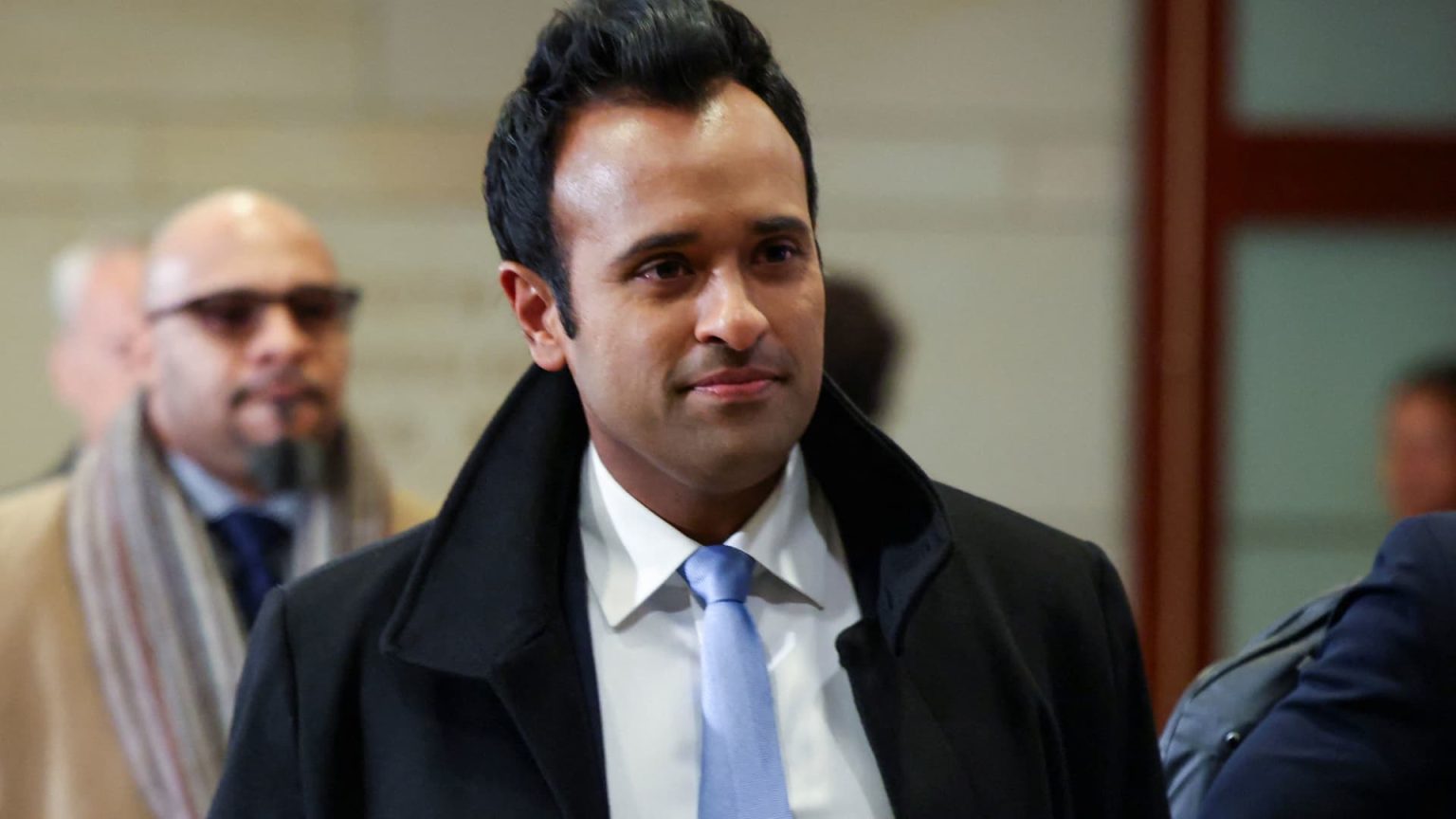CLEVELAND — Biotech entrepreneur Vivek Ramaswamy has announced his candidacy for the governorship of Ohio, launching a campaign aimed at transforming education, cutting regulations, and slashing state spending. In his approach, he draws parallels to the agenda he helped shape for Donald Trump’s proposed Department of Government Efficiency, while also seeking to position himself as a change agent in a state that has seen 16 years of Republican control. Ramaswamy’s campaign strategy includes harnessing his relationships and experiences to resonate with voters as he prepares for a statewide tour kicking off this week.
| Article Subheadings |
|---|
| 1) Ramaswamy’s Ambitious Agenda for Ohio |
| 2) The Impact of Federal Employee Sentiments |
| 3) Competition in the Republican Primary |
| 4) Ramaswamy’s Vision for Education Reform |
| 5) A Commitment to Governance |
Ramaswamy’s Ambitious Agenda for Ohio
On Monday, Vivek Ramaswamy formally introduced his gubernatorial campaign, where he laid out a vision that echoes the cost-cutting, efficiency-focused agenda he was part of with Donald Trump‘s administration. Ramaswamy aims to reshape public education, reduce state regulations, and slash spending, which he believes will resonate with Ohio voters. His rationale for running stems from a belief that significant change requires strong leadership at the state level. He stated, “I believe that leading from the front here in Ohio… would be the way that I as a leader would be able to have the biggest impact.” This strong proclamation sets a tone for a campaign focused on government reform through deregulation and spending cuts.
The Impact of Federal Employee Sentiments
As Ramaswamy launches his campaign, the state of Ohio presents unique challenges, particularly concerning federal employees and the implications of potential cuts to federal programs. Ohio is home to a substantial population of federal workers, raising concerns about the potential consequences of Ramaswamy’s past involvement with initiatives aimed at reducing federal spending. According to a recent poll, over half of respondents indicated that they believe Trump has gone “too far” in cutting federal programs. With these sentiments in mind, Ramaswamy’s plan could generate mixed responses, stirring concerns among those worried about the impact on federal Medicaid funding and other critical programs. Nonetheless, Ramaswamy counters that his policies will ultimately benefit parents and families invested in the state’s educational outcomes.
Competition in the Republican Primary
The Ohio gubernatorial race is heating up ahead of the upcoming primary, with Ramaswamy shaking up the field of Republican candidates. His late entry has prompted swift responses, with figures such as Ohio Attorney General Dave Yost and State Treasurer Robert Sprague adjusting their strategies in light of Ramaswamy’s candidacy. Yost, who has positioned himself as a seasoned alternative to Ramaswamy’s newcomer status, expressed skepticism about Ramaswamy’s commitment to Ohio, voicing concerns by stating, “I consider Ramaswamy to be a friend… but I just candidly think I’m much better prepared to bring bold leadership to Ohio.” The dynamic among these candidates will be critical as they prepare to mobilize their respective bases ahead of the primary.
Ramaswamy’s Vision for Education Reform
Education reform is a primary focus of Ramaswamy’s campaign. He advocates for phasing out Ohio’s income tax, introducing merit-based pay for teachers, and promoting homeschooling and other alternative education routes. This vision aligns with broader GOP goals, but Ramaswamy emphasizes that he aims to circumvent typical opposition from teachers unions by presenting his plans as beneficial for students and their families. He stated, “Merit-based pay for teachers… would make the state the magnet for the best educators across the country.” This approach aims to appeal to parents concerned about educational quality while also addressing economic pressures facing the state.
A Commitment to Governance
Ramaswamy has publicly committed to serving a four-year term should he be elected, distancing himself from any future presidential ambitions in the near term. He iterated that his focus is rooted in the immediate needs of Ohio, and he recognizes that implementing his ambitious agenda may take longer than one term. His assertion, “It is my expectation that an agenda as ambitious as the one we’re pursuing will likely take two terms to fully implement,” reflects a pragmatic approach to governance, potentially appealing to voters searching for stability and direction amidst a changing political landscape.
| No. | Key Points |
|---|---|
| 1 | Vivek Ramaswamy announces his candidacy for governor of Ohio. |
| 2 | He aims to reshape public schools, reduce regulations, and cut state spending. |
| 3 | Concerns exist among Ohio voters regarding potential cuts to federal programs. |
| 4 | The GOP primary is heating up with Yost and Sprague adjusting their strategies. |
| 5 | Ramaswamy has pledged to serve a full term if elected and is committed to long-term reforms. |
Summary
Ramaswamy’s entry into the Ohio gubernatorial race introduces a new dynamic, as he seeks to implement a comprehensive reform agenda while navigating the complexities of voter sentiments on federal spending cuts. His ambitious plans centered on education reform, coupled with a commitment to serve a full term, position him as a fresh alternative in a state led by longstanding Republican governance. As the primary approaches, how Ramaswamy balances these issues will be crucial to mobilizing support from diverse voter segments.
Frequently Asked Questions
Question: What are Vivek Ramaswamy’s main proposals for education in Ohio?
Ramaswamy aims to implement merit-based pay for teachers, phase out the state income tax, and promote homeschooling options, all designed to enhance educational quality and attract top educators.
Question: Who are Ramaswamy’s main competitors in the Ohio gubernatorial race?
His main competitors include Ohio Attorney General Dave Yost and State Treasurer Robert Sprague, both of whom are making significant strategic moves in light of Ramaswamy’s candidacy.
Question: How does Ramaswamy plan to address concerns regarding federal program cuts?
Ramaswamy believes that his proposals will ultimately benefit families and students, asserting that focusing on state-level reforms can mitigate negative sentiments surrounding federal spending cuts.


